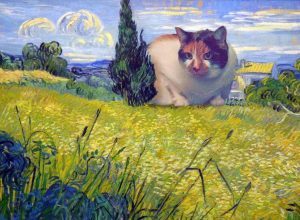By Abby Brown, Creative Associate
If you work in an environment that puts you anywhere near a designer, you might notice that we have our own language. The words “Helvetica,” “PMS,” “InDesign” and “kerning” make perfect sense to your designer colleagues, but might leave you scratching your head. Familiarizing yourself with some basic design lingo might help you interact more efficiently with your designer, and hopefully make everyone’s job easier.
The Adobe Holy Trinity
I’m partially kidding, but there are few designers who can survive without Adobe InDesign, Photoshop and Illustrator. There are plenty of other Adobe programs, but those three are the most popular. InDesign is great for large documents where a consistent layout is key; Illustrator is vital for creating logos and graphics; and Photoshop is how you put your cat into pictures of famous paintings. Odds are if you’re using a designer, they’re using one of these programs. If you’re transferring pre-existing files to a new designer, sending an original Adobe file is much preferred to a PDF or JPG.
Vector vs Raster Files
If you’re not familiar with design, neither of those words probably make sense to you. Raster images are made from pixels, so when they’re scaled to a large size, they start to get fuzzy. Photos are raster images, so when working with a designer, they’ll want high resolution versions of everything to make sure your image is crisp and clean. When working with logos or any sort of flat graphics, vector files are the golden ticket. If a file is a vector, you can enlarge it or shrink it to your heart’s content and it’s never going to lose its quality. Your designer needs a vector file to do their job properly, so try to send your logo in the original Illustrator file. Check out this site to read more about fun file stuff!
CMYK vs RGB (Acronyms are Fun!)
If your designer is sending you a batch of different files, like a logo, you might find them labeled with weird acronyms with no clue as to what they mean. CMYK, which stands for Cyan, Magenta, Yellow and Key (aka black), is a color model used in printing. So if your logo is going to be printed on business cards, it would be in CMYK color mode. RGB, which stands for Red, Green and Blue, is the color model used to create images on a digital display. So if you’re putting your logo on you website, you want an RGB file. These different color modes help your logo or graphic stay true to the correct colors of your brand.
So the next time your designer spews out jargon that leaves you confused, remember that even though we have our own language, we’re happy to translate. For a more extensive look into design terms, check out this nifty dictionary.
